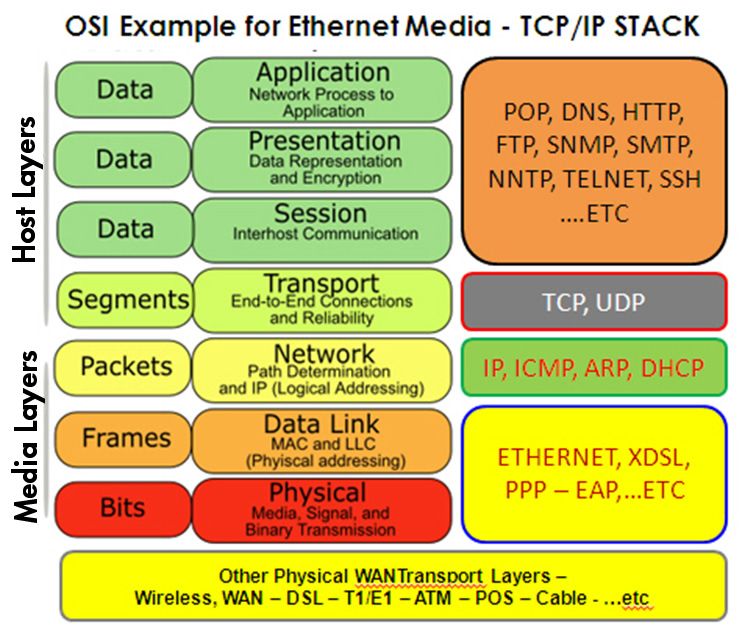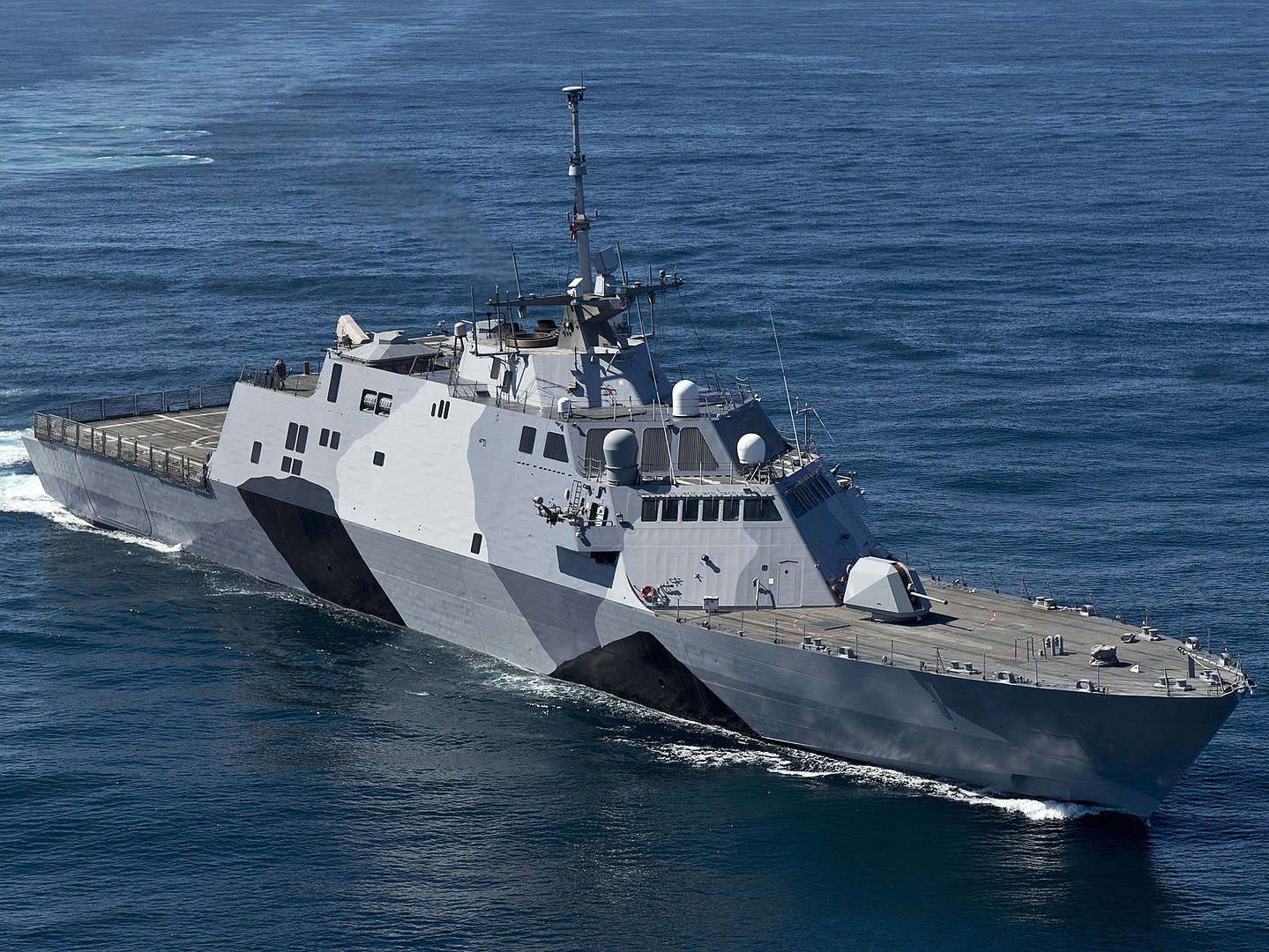Introduction
We successfully conducted a demonstration to a Navy customer the implementation of a replacement legacy tactical mesh networked radio operating on a custom software defined radio (SDR) hardware platform. This demonstration included sending a live video stream over-the-air in a relay network configuration consisting of 4 tactical radios operating in a self organizing, self optimizing, and self healing mesh network. The multi-hop relay network topology is used to extend the operational range of the network.
OSI Model
This post describes the decomposition of the implementation of an embedded systems communications stack using the long standing Open Systems Interconnection model (OSI model) as shown in the following figure for the TCP/IP stack. The OSI Model is a conceptual framework used to describe the functions of a networking system.
The OSI model characterizes computing functions into a universal set of rules and requirements in order to support interoperability between different products and software. In the OSI reference model, the communications between a computing system are split into seven different abstraction layers: Physical, Data Link, Network, Transport, Session, Presentation, and Application. The functionality encapsulated in each OSI Layer is described in the following figure.

Scope
Excluding the OSI Physical Layer, we were responsible for the development of the OSI communications protocol stack to implement the full featured replacement for the legacy radio. This radio is used in a network of unmanned maritime vehicles (UMVs) deployed from a Littoral Combat Ship (LCS).
Design
The communications protocol stack was implemented as two user space Linux daemons operating under a custom embedded Linux distribution on the custom SDR hardware platform. This work continues the maturation of the embedded software communications stack as described in the post Maritime Radio SBIR Phase 2 combining the RF waveform on a custom integrated hardware platform.
OSI Host Layers
OSI Layer 7 of the software stack, the Application Layer, as well as Layers 6, 5, and 4 provide the host layers of the OSI stack.
The host layers in the radio provided support for:
- standardized network services, including upstream command and control via a legacy radio compatible SNMPv2/3 interface,
- a full featured HTTP/HTTPS web interface for status and control, and
- support for the FTP/FTPS protocol to facilitate secure file transfers to and from an external FTP/FTPS server.
Application processes such as SSH, DNS, and NNTP are provided by software executing on the radio platform.
System Integration
Full communications system integration and control was provided by way of reverse engineering an external sector antenna controller which implemented a custom High-Level Data Link Control (HDLC) serial messaging protocol. When the antenna controller is in charge of the wireless network, it controls the sequence and timing of the master radio’s network discovery of slave radios, and initiates master to slave poll loops for the handshake exchange of host data.
OSI Layer 4
The communications stack implemented OSI Transport Layer 4 by establishing and terminating logical connections between radios through the implementation of periodic network DISCOVERY and JOIN messages. This layer supports connectionless oriented communications, end-to-end reliability through packet retransmissions, and flow control.
Host data is classified by priority by the DSCP value, and whether or not the traffic requires ARQ reliable handling. Automatic repeat request (ARQ), also known as automatic repeat query, is an error-control method for data transmission that uses acknowledgements (messages sent by the receiver indicating that it has correctly received a packet) and timeouts to achieve reliable data transmission over an unreliable communication channel. If the sender does not receive an acknowledgment of a packet reception, it re-transmits the packet until it receives an acknowledgment or exceeds an SNMP configured timeout value.
OSI Layer 3
The embedded systems software stack provides OSI Networking Layer 3 support in the form of host packet routing based on on-the-fly learned host media access control (MAC) addresses. The Networking layer supported relay configurations, with dynamic handovers of deployed slave nodes between relay or master radio control. Multicast and Broadcast message routing is provided through serial unicast. System configuration and operation did not require any form of IP convention, that is IP subnetting, to be used for the host devices, and was plug-and-play (PnP) compatible. This facilitates the discovery and management of a communications components in the network without the need for physical device configuration or user intervention.
Quality of Service
Quality of Service (QoS) policies were implemented to allow host data traffic to be treated differently based on the behavior assignment to the DSCP field of the IP header of the host traffic. Different traffic classes were assigned for higher priority of transmission (CoS) and for higher reliability using packet retransmissions (ToS).
OSI Layer 2
For OSI Data Link Layer 2 functionality, the software stack provided RF media access control through the implementation of a custom centralized master radio driven Time-Division Multiple Access (TDMA) channel access method designed to address the wireless communication challenges of a maritime environment. Link dynamics associated with the maritime environment include fading, interference, obstacles, and the effects of network node frequent movement. This custom Layer 2 Protocol includes support for highly reactive, variable, and adaptive transmit data rates based on peer provided link channel metrics. This protocol supported directional communications between point-to-point connected nodes using a sector antenna.
OSI Layer 1
This replacement radio included a novel jamming and interference wireless waveform to support the mission requirements as the Open Systems Interconnection (OSI) conceptual model Physical Layer. This unique wireless waveform was designed and developed by GIRD Systems Incorporated, who also designed and developed the custom hardware software defined radio (SDR) platform.
Conclusion
This post describes the decomposition of the implementation of a real-time networked radio communications stack according to the OSI conceptual model. This model provides a layered approach for the implementation of the mesh networked radio communications stack.

